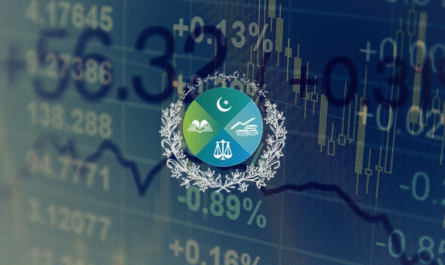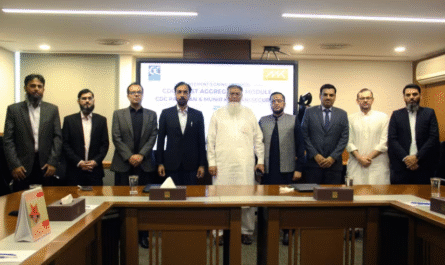1. A Remarkable Disinflation Trend
In February 2025, Pakistan’s consumer price index (CPI) inflation dropped to ≈1.5% YoY, its lowest reading since September 2015.
Earlier, January 2025 saw inflation at 2.4% YoY, also the lowest in over nine years .
This dramatic fall contrasts sharply with the ≈40% spike in mid‑2023—a period of crisis driven by soaring food, energy prices and currency depreciation.
2. Drivers Behind the Slowdown
- High base effects: Last year’s elevated inflation numbers make year-on-year growth look modest .
- Drop in food & energy costs: Global oil and crop price declines have helped ease pressures .
- Currency stabilization: A steadier rupee has reduced imported inflation .
- Tight monetary stance: A cumulative 1,000 bps rate reduction—from 22% to ~12%—reflects deliberate disinflation management.
3. Policy Response & Outlook
- SBP’s rate cuts: The State Bank of Pakistan implemented seven consecutive cuts through January 2025—another likely in the pipeline.
- Fiscal consolidation: Under the IMF program, government budgets have restrained spending and prioritized defence, while aiming for 4.2% GDP growth.
- Risks ahead:
- Fading base effects expected to push inflation above 3–4% by mid‑2025.
- Geopolitical uncertainty (e.g., Middle East tensions) could influence global oil prices, complicating inflation targets .
4. Real-World Impact
- Relief for consumers? Slower price rises offer respite—but real incomes haven’t risen correspondingly, leaving the average Pakistani still feeling the squeeze .
- Sectoral inflation persists: Core inflation (excluding volatile items) remains elevated (rural-core ≈10%), pointing to enduring cost pressures .
- Pakistan’s Inflation Likely to Hit 9-Year Low
5. The Road Ahead
- Moderate uptick expected: Inflation likely to rebound to ~2.7–3.0% by May–June due to fading base effects .
- Monetary policy at a crossroads: The SBP must weigh further rate cuts to boost growth against the risk of inflation resurgence.
- IMF’s stance pivotal: With the next IMF review due in H2 2025, conditional targets around inflation (5–7%) and fiscal discipline will be key .
- Geopolitical vulnerability: Oil price shocks from global unrest could ripple through, testing Pakistan’s inflation control efforts.
🧭 Bottom Line
Pakistan’s inflation cooling to multi-year lows marks a significant achievement in macroeconomic stabilization. It’s a positive signal for relief in living costs, monetary policy flexibility, and IMF compliance. But with core inflation still elevated, an unpredictable global outlook, and real incomes lagging, the economy remains on a delicate tightrope.
The central bank and government must remain agile—balancing growth support with inflation vigilance—to ensure this drop in inflation translates into sustainable, tangible relief for the average Pakistani household.



